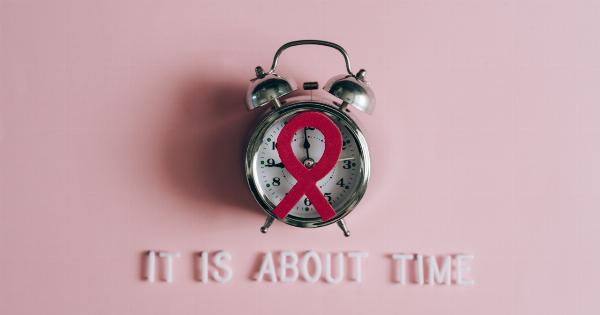HIV, or Human Immunodeficiency Virus, is a chronic illness that attacks the immune system, making individuals more susceptible to other infections and illnesses. While there is no cure for HIV, it can be managed with proper treatment and care.
Understanding the symptoms and stages of HIV is crucial for early diagnosis and effective treatment.
Transmission of HIV
HIV is transmitted through bodily fluids, including blood, semen, vaginal fluids, and breast milk.
It can be spread through unprotected sex, sharing needles or other injection equipment, and mother-to-child transmission during pregnancy, childbirth, or breastfeeding.
Symptoms of HIV
The initial symptoms of HIV, also known as acute HIV, can be similar to those of other viral infections, such as the flu. These symptoms can appear within 2-4 weeks after initial infection and may include:.
- Fever
- Headache
- Fatigue
- Sore throat
- Rash
- Swollen lymph nodes
- Muscle or joint pain
It is important to note that not all individuals with HIV will experience acute symptoms. Some may not show symptoms for years, while others may have mild symptoms that may be mistaken for other illnesses.
Stages of HIV
Untreated HIV progresses through three different stages:.
Stage 1: Acute HIV
As mentioned above, this stage occurs within 2-4 weeks after initial infection and may include flu-like symptoms. During this stage, the virus is rapidly multiplying, and the immune system is beginning to respond to the virus.
Stage 2: Clinical Latency
Also known as chronic HIV or asymptomatic HIV, this stage can last for years. The virus continues to multiply at a slower rate, but the individual may not show any symptoms. However, HIV is still active and can be transmitted during this stage.
AIDS: Stage 3
AIDS, or Acquired Immune Deficiency Syndrome, is the most severe stage of HIV. AIDS occurs when the immune system is severely damaged, and the individual is at high risk for life-threatening infections and cancers.
AIDS is diagnosed when the individual’s CD4+ T cell count (a type of white blood cell that helps fight infection) drops below 200 cells per cubic millimeter of blood, or if they develop one of several AIDS-defining illnesses, such as Kaposi’s sarcoma, pulmonary tuberculosis, or cryptococcal meningitis.
Treatment for HIV
While there is no cure for HIV, antiretroviral therapy (ART) can effectively manage the virus and prevent it from progressing to AIDS.
ART involves taking a combination of medications that work to suppress the virus, reduce the risk of transmission, and improve overall health. It is important to begin ART as early as possible to slow the progression of the virus and prevent damage to the immune system.
Preventing HIV
Preventing the transmission of HIV is key in managing the virus. This can be done by:.
- Using condoms consistently and correctly during sex
- Avoiding sharing needles or other injection equipment
- Discussing HIV status and testing with sexual partners
- Using PrEP (pre-exposure prophylaxis) or PEP (post-exposure prophylaxis) for those who are at high risk for HIV
Conclusion
Understanding the symptoms and stages of HIV is crucial for early diagnosis and effective treatment. While HIV is a chronic illness, with proper treatment and care, individuals with HIV can live long and healthy lives.
Prevention and regular testing are key to managing the virus and reducing its impact on individuals and communities.


























